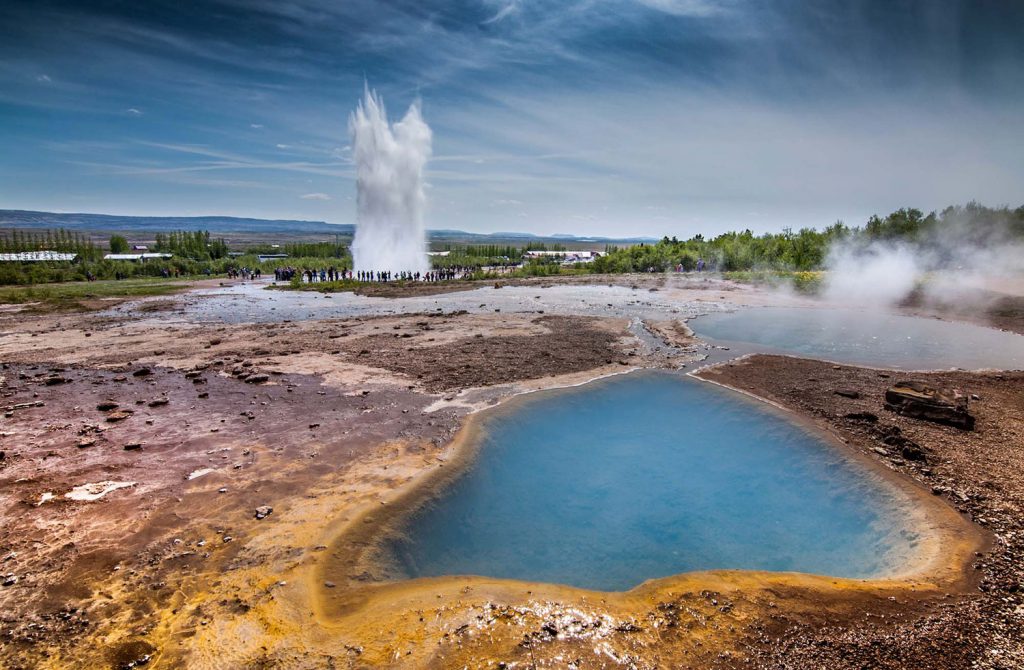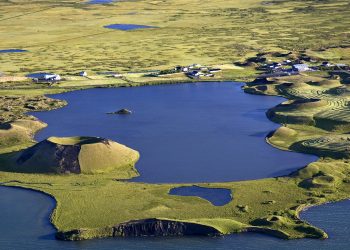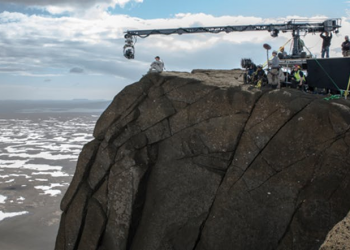The Great Geysir
Geysir is one of the main attractions on Iceland´s most popular sightseeing tour, the Golden Circle. All of the world’s spouting hot springs are named after Geysir in Iceland – in all languages other than Icelandic, the word “geysir” or “geyser” names the phenomenon. In Icelandic, it´s just the name of that single geyser, and although the word refers to all geysers in general, there´s only one real Geysir and that’s the one in south-west Iceland.
The first tales of the Great Geysir date back to the year 1294 when a powerful earthquake shook the southern lowlands of Iceland and changed the geothermal area in Haukadalur valley. Reports found in the written annals stating that “large hot springs” were formed, are now thought to indicate that the hot springs started to spout.
The fame of the area increased in the following centuries, especially that of the Great Geysir itself. This was not surprising as erupting geysers were at the time not known in Europe outside Iceland. The geysers in Yellowstone and New Zealand had obviously not been discovered at that time.
During the centuries after 1294 the intensity of the thermal areas evidently increased after large earthquakes, striking on average every 100 years. However, Geysir became dormant for a long while, until it woke up dramatically as an earthquake of 6.5 magnitude on the Richter scale hit the area on 17 June 2000 – coincidentally, Iceland´s National Day. Since then, Geysir has been erupting sporadically, but when Geysir performs, it sure lives up to its name, “The Geysir”, ejecting a jet of steaming water, between 60-80 m high.

Strokkur
Another geyser – Strokkur – is located less than 100 m away from Geysir and it erupts frequently, every 4-8 minutes. Strokkur is a fountain geyser, one of Iceland´s most famous, first mentioned in 1789. It is one of the very few natural geysers that erupts regularly, spouting steaming water up to about 20 metres.
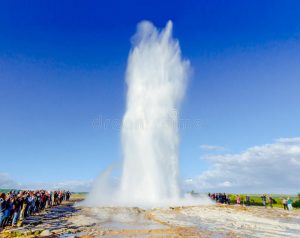
Other geysers
As well as Geysir and Strokkur, Haukadalur area in south-western Iceland features smaller geysers, steaming fumaroles and colourful, mineral-rich pools and mud formations. It is also a great walking destination, with numerous marked walking paths that lead past hot springs and ancient silica deposits, where you can feel the heat underfoot as you stroll through this beautiful, surreal landscape.
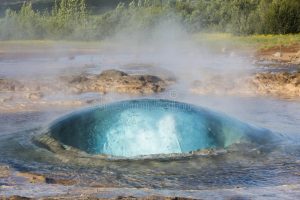
Why does a geyser erupt?
Geysers occur in high temperature geothermal areas, within the zone of active rifting and volcanism, where the temperature in the subsurface system is higher than 200°C at less than 1 km depth. The temperature of the hot springs is up to 100°C and some are constantly boiling: if the temperature at depth rises above boiling, the hot springs erupt which means that they are geysers. Geysir’s eruption occurs when boiling water within the geyser, trapped by cooler water above it, explodes, forcing its way to the surface. In more detail, geysers erupt because the thermal water ascending through their channels boils at some depth below the surface.
As the water boils, it converts into steam and, since the steam occupies far greater volume than water, the water above in the channel is thrown high up into the air. At about 23 m depth in the Geysir pipe the water is at 120°C temperature. It is in equilibrium with the pressure of the water above in the pipe; i.e., the weight of the water above keeps the boiling down. At a depth of around 16 m, the temperature of the water sometimes rises above boiling, seen as increased turbulence at the surface. This turbulence (boiling) can increase to the point where the water above in the pipe is lifted slightly, and a chain reaction starts – the pressure decreases making further boiling possible and the water flashes into steam, resulting in an eruption in Geysir. The boiling then extends down into the pipe, throwing more water into the air. When all the water in the pipe has been thrown out, the water coming from depth changes immediately into steam and a steam eruption follows the water eruption, with accompanying noise. The water-phase lasts for a few minutes and the steam-phase considerably longer, gradually dying out and the cycle starts again.
For centuries the eruptions in Geysir were considered supernatural and many theories were built to explain these wonders. Don´t let the scientific explanations spoil your sense of wonder and magic. Be mindful of the fact that the silica sinter is delicate and, although constantly being formed, the process takes years. Respect needs to be shown for the fragile beauty of this unique area and nature must be allowed to evolve on its own. A good photograph is a much better souvenir than a piece of silica sinter.

